Contents
Advanced Strategies for Production Planning and Scheduling
A responsive, real-time solution for today’s complex production environments
Tabel of contents
Smart Manufacturing: Advanced Production Planning & Scheduling
How AI, digital tools, and Industry 5.0 are redefining operational excellence
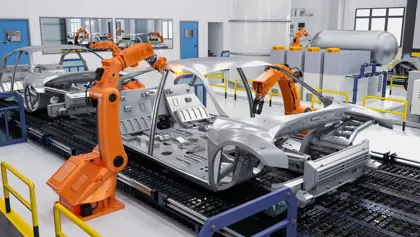
Contents
Introduction: The New Era of Manufacturing
2Challenges of Modern Production Planning & Scheduling
3The Evolution of Production Planning & Scheduling: From Manual to AI-Driven
4Industry 5.0: The Human-Centric Future of Manufacturing
5How AI and Digital Tools Are Transforming Production Planning & Scheduling
6Real-World Applications: Success Stories from HSO
7Summary
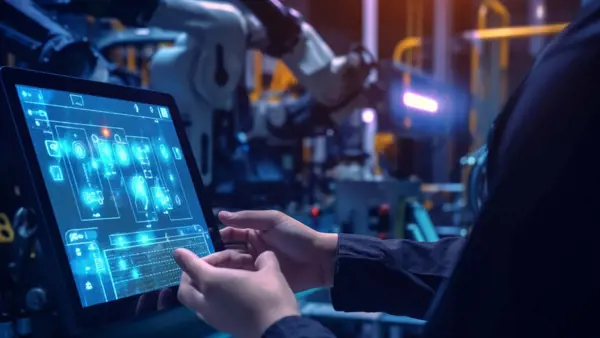

Introduction: The New Era of Manufacturing
"AI is not just a tool for automation; it’s a catalyst for innovation. By integrating AI into manufacturing processes, companies can unlock new levels of efficiency, agility, and sustainability."

The manufacturing landscape is undergoing a seismic shift. Driven by the convergence of advanced technologies, global supply chain disruptions, and evolving customer expectations, companies are rethinking how they plan and execute production. The rise of Industry 4.0—marked by the integration of AI, IoT, and big data—has opened up new possibilities for optimizing operations, reducing costs, and improving agility.
But as we look to the future, a new standard is emerging - Industry 5.0. While Industry 4.0 focused on automation and data-driven efficiency, Industry 5.0 emphasizes the collaboration between humans and machines, placing people at the center of technological innovation. This evolution is not just about smarter factories; it’s about creating a more sustainable, human-centric, and resilient manufacturing ecosystem.
According to The Manufacturer Agility Assessment 2024, 78% of manufacturers now recognize agility as a critical competitive advantage, with 65% of companies actively investing in digital tools to enhance their production planning and scheduling processes. This report explores how modern manufacturers are leveraging cutting-edge technologies to transform these critical functions, overcome operational challenges, and prepare for the era of Industry 5.0.


Challenges of Modern Production Planning & Scheduling
The Complexity Conundrum
Production planning and scheduling are no longer straightforward tasks. Manufacturers must juggle multiple variables, including:
While production planning focuses on long-term resource allocation and strategic decision-making, scheduling deals with the day-to-day execution of those plans. Both functions are critical, but they require different tools and approaches to address their unique challenges.
The Collaboration Challenge
Production planning and scheduling require close collaboration across multiple departments, including sales, supply chain, maintenance, and finance. Without seamless communication and data sharing, planners and schedulers risk making decisions based on outdated or incomplete information.
The Agility Imperative
In a world where disruptions are the norm, agility is key. Manufacturers must be able to quickly adapt to changes in demand, supply chain disruptions, or unexpected operational issues. This requires both production planning and scheduling processes that are not only responsive but also predictive, enabling companies to anticipate challenges before they arise.
The Manufacturer Agility Assessment 2024 Report reveals that 72% of manufacturers face significant challenges in maintaining agility, with 58% citing supply chain disruptions as the primary obstacle.
The Knowledge Gap
Many experienced planners and schedulers rely on years of hands-on experience and intuition. While this expertise is invaluable, it often remains undocumented, creating a risk when these employees leave the organisation. Capturing and digitising this knowledge is essential for long-term success in both production planning and scheduling.


The Evolution of Production Planning & Scheduling: From Manual to AI-Driven
In the early days, production planning and scheduling were manual processes, relying on physical boards, index cards, and spreadsheets. While these methods provided a basic level of organisation, they were time-consuming, error-prone, and lacked integration with other systems.
The advent of digital tools marked a significant step forward. Planners and schedulers began using software to create plans and schedules, track progress, and collaborate with other departments. However, these tools were often siloed, limiting their effectiveness.
As manufacturers embraced lean principles and agile methodologies, production planning and scheduling processes became more flexible and responsive. Planners could develop long-term strategies, while schedulers could quickly adjust daily operations in response to changes in demand or operational conditions.
Today, the most forward-thinking manufacturers are leveraging AI and machine learning to revolutionise both production planning and scheduling. These technologies enable companies to optimise long-term resource allocation, predict potential disruptions, and make real-time data-driven decisions.
According to the Manufacturer Agility Assessment 2024, 62% of manufacturers are now using AI-driven tools for production planning and scheduling, with 45% reporting a significant improvement in operational efficiency.
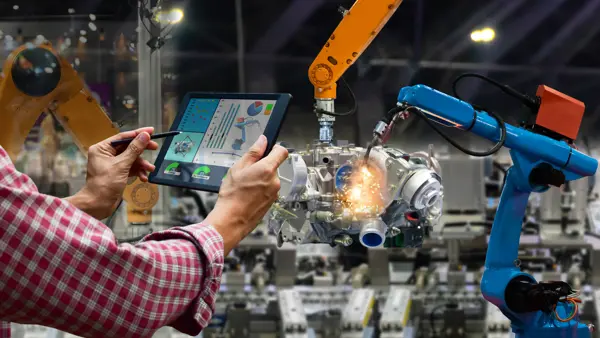
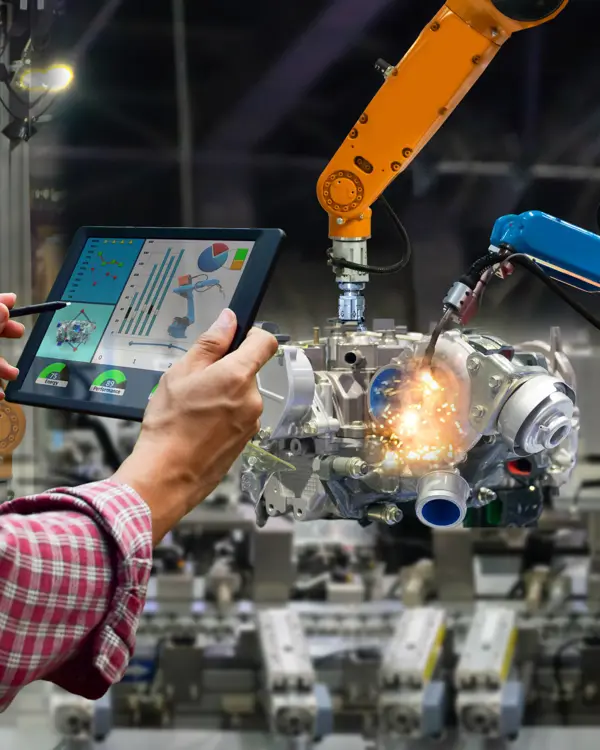
Industry 5.0: The Human-Centric Future of Manufacturing
While Industry 4.0 laid the foundation for smart factories and data-driven decision-making, Industry 5.0 takes this a step further by emphasising the role of humans in the manufacturing process. It’s not about replacing people with machines; it’s about creating a collaborative environment where humans and machines work together to achieve greater innovation, sustainability, and resilience.
Three key pillars characterise Industry 5.0:
"Industry 4.0 laid the foundation for smart factories, but Industry 5.0 is about bringing humans back into the equation. It’s about creating a collaborative ecosystem where technology enhances human creativity and decision-making."
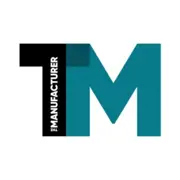
Industry 5.0 encourages closer collaboration between humans and machines. For example, AI-powered tools can assist planners and schedulers by providing recommendations, but the final decision-making remains in human hands.

With the help of AI and robotics, manufacturers can achieve mass customisation, producing tailored products without sacrificing efficiency.
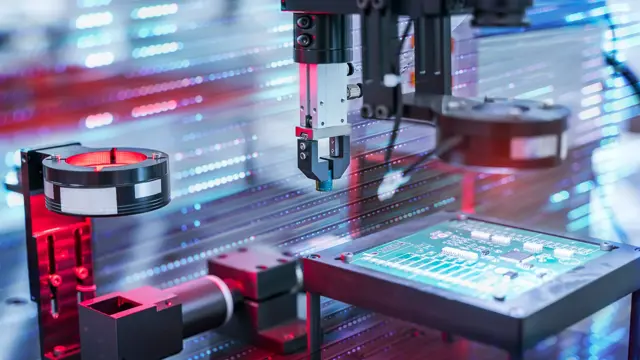
Industry 5.0 encourages manufacturers to incorporate sustainability into their production planning and scheduling processes, such as optimising energy usage or reducing waste.

By automating repetitive tasks, Industry 5.0 allows workers to focus on higher-value activities, such as problem-solving, innovation, and strategic decision-making.



How AI and Digital Tools Are Transforming Production Planning & Scheduling
A digital twin is a virtual replica of a production facility, providing real-time insights into operations. By simulating different scenarios, manufacturers can identify potential bottlenecks, optimise resource allocation, and improve overall efficiency in both production planning and scheduling.
AI-powered analytics tools enable manufacturers to analyse vast amounts of data and uncover hidden patterns. These insights can be used to optimise long-term production planning and day-to-day scheduling, reduce waste, and improve decision-making.
Modern planning and scheduling tools facilitate real-time collaboration across departments, ensuring that everyone is working from the same information. This leads to faster decision-making, improved alignment, and better outcomes.
AI can predict potential disruptions before they occur, such as machine breakdowns or material shortages. This allows manufacturers to take proactive measures in both production planning and scheduling, minimising the impact on production.
The Manufacturing Agility Assessment 2024 stated that 70% of manufacturers using predictive analytics, report a significant reduction in unplanned downtime, with 55% achieving higher on-time delivery rates.


Real-World Applications: Success Stories from HSO
Case Study 1: Optimising Production Planning for a Global Automotive Supplier
HSO Enterprise Solutions partnered with a leading global automotive supplier to implement Microsoft Dynamics 365 for Manufacturing. The company faced challenges in managing its complex production planning processes across multiple plants, leading to inefficiencies and delays.
By leveraging Dynamics 365, HSO helped the automotive supplier centralise its production planning and scheduling, enabling real-time visibility into operations across all facilities. The platform’s AI-driven insights allowed the company to optimise resource allocation, reduce changeover times, and improve on-time delivery rates. As a result, the supplier achieved a 20% increase in production efficiency and a 15% reduction in operational costs.
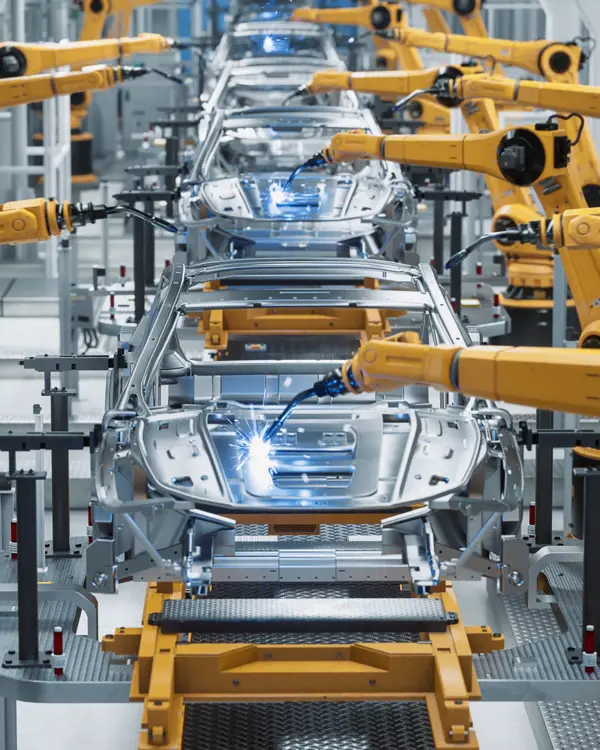
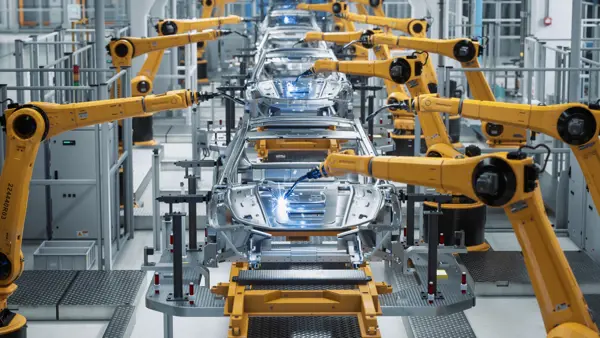


Case Study 2: Enhancing Agility for a Food and Beverage Manufacturer
A major food and beverage manufacturer partnered with HSO Enterprise Solutions to modernise its scheduling processes. The company struggled with manual scheduling methods, which led to frequent delays and inefficiencies.
HSO implemented Microsoft Dynamics 365 for Manufacturing, enabling the company to automate its scheduling processes and integrate them with its ERP system. The platform’s predictive analytics capabilities allowed the manufacturer to anticipate potential disruptions and adjust production schedules in real time. This resulted in a 25% improvement in production output and a 10% reduction in waste. Additionally, the company was able to respond more quickly to changing customer demands, enhancing its overall agility.
Case Study 3: Streamlining Operations for a Medical Device Manufacturer
A medical device manufacturer faced challenges in managing its complex assembly processes, which involved thousands of components and strict regulatory requirements. The company partnered with HSO Enterprise Solutions to implement Microsoft Dynamics 365 for Manufacturing.
HSO helped the manufacturer create a digital twin of its production facility, enabling real-time monitoring and optimisation of its operations. The platform’s AI-driven recommendations allowed the company to reduce assembly times by 15% and improve overall equipment effectiveness (OEE) by 10%. Additionally, the manufacturer was able to ensure compliance with regulatory requirements, reducing the risk of costly delays.
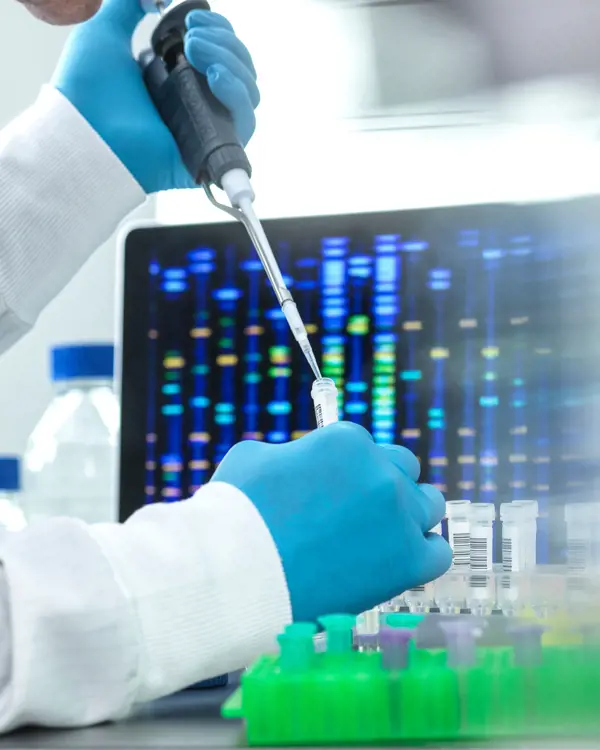


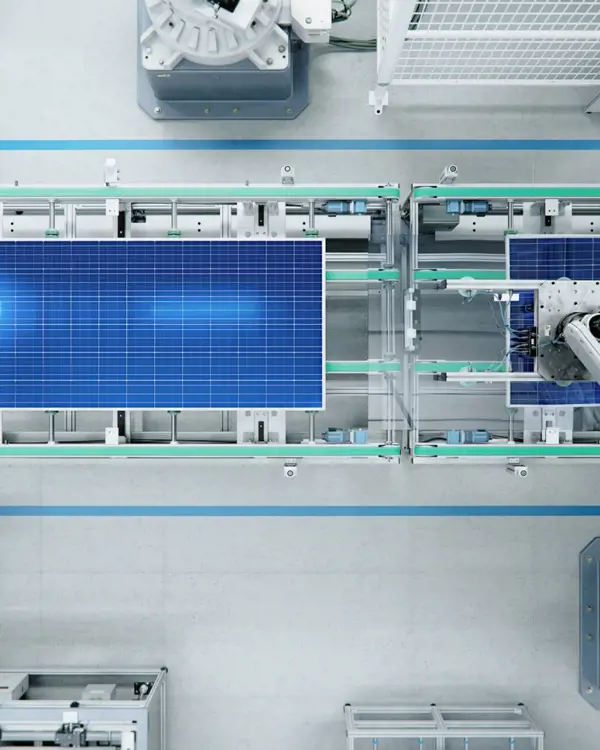
Summary
To accelerate production planning and scheduling, manufacturers must embrace a combination of advanced technologies, agile methodologies, and human-centric approaches. Here’s how:
1. Leverage AI and Advanced Analytics: AI-driven tools can optimise long-term production planning and day-to-day scheduling, predict disruptions, and provide actionable insights, enabling manufacturers to make data-driven decisions in real time.
2. Adopt Digital Twins: A digital twin of a production facility provides a virtual blueprint for success, allowing organisations to simulate scenarios, identify bottlenecks, and optimise resource allocation for both production planning and scheduling.
3. Foster Collaboration: Modern advanced planning and scheduling tools facilitate real-time collaboration across departments, ensuring that everyone is working from the same information and aligned with business objectives.
4. Embrace Industry 5.0 Principles: By placing humans at the center of technological innovation, manufacturers can achieve greater sustainability, resilience, and operational excellence in both production planning and scheduling.
The success stories demonstrate how these strategies can be implemented in practice, delivering measurable improvements in efficiency, agility, and customer satisfaction.
The future of manufacturing lies in the seamless integration of human expertise and advanced technology. Industry 5.0 represents a new chapter in this journey, one that prioritises sustainability, resilience, and human-centric innovation. By embracing AI, digital tools, and the principles of Industry 5.0, manufacturers can overcome the challenges of modern production planning and scheduling and achieve new levels of efficiency, agility, and customer satisfaction.
The Manufacturer Agility Assessment 2024 underscores this shift, with 75% of manufacturers planning to invest in Industry 5.0 technologies over the next three years.
Industry 5.0 is not just about smarter factories; it’s about creating a more sustainable, human-centric, and resilient manufacturing ecosystem.
The time to act is now. Are you ready to transform your production planning and scheduling processes and lead the way in Industry 5.0?
About HSO
Advanced Planning and Scheduling is more than just a tool — it’s a strategic investment that can transform your manufacturing operations. By evaluating your needs, choosing the right solution, and planning for successful implementation, you can unlock the full potential of APS and achieve your operational goals.
As HSO is a 20-year veteran of Microsoft’s Inner Circle, which consists of the top 1% of Microsoft’s Global Partners, your project is in safe hands.
Contact HSO to learn more about how we can work with you to gain value from technology.



Advanced Strategies for Production Planning and Scheduling
A responsive, real-time solution for today’s complex production environments
We, and third parties, use cookies on our website. We use cookies to keep statistics, to save your preferences, but also for marketing purposes (for example, tailoring advertisements). By clicking on 'Settings' you can read more about our cookies and adjust your preferences. By clicking 'Accept all', you agree to the use of all cookies as described in our privacy and cookie policy.
Purpose
This cookie is used to store your preferences regarding cookies. The history is stored in your local storage.
Cookies
Location of Processing
European Union
Technologies Used
Cookies
Expiration date
1 year
Why required?
Required web technologies and cookies make our website technically accessible to and usable for you. This applies to essential base functionalities such as navigation on the website, correct display in your internet browser or requesting your consent. Without these web technologies and cookies our website does not work.
Purpose
These cookies are stored to keep you logged into the website.
Cookies
Location of Processing
European Union
Technologies Used
Cookies
Expiration date
1 year
Why required?
Required web technologies and cookies make our website technically accessible to and usable for you. This applies to essential base functionalities such as navigation on the website, correct display in your internet browser or requesting your consent. Without these web technologies and cookies our website does not work.
Purpose
This cookie is used to submit forms to us in a safe way.
Cookies
Location of Processing
European Union
Technologies Used
Cookies
Expiration date
1 year
Why required?
Required web technologies and cookies make our website technically accessible to and usable for you. This applies to essential base functionalities such as navigation on the website, correct display in your internet browser or requesting your consent. Without these web technologies and cookies our website does not work.
Purpose
This service provided by Google is used to load specific tags (or trackers) based on your preferences and location.
Why required?
This web technology enables us to insert tags based on your preferences. It is required but adheres to your settings and will not load any tags if you do not consent to them.
Purpose
This cookie is used to store your preferences regarding language.
Cookies
Why required?
We use your browser language to determine which language to show on our website. When you change the default language, this cookie makes sure your language preference is persistent.
Purpose
This service is used to track anonymized analytics on the HSO.com application. We find it very important that your privacy is protected. Therefore, we collect and store this data anonymously on our own servers. This cookie helps us collect data from HSO.com so that we can improve the website. Examples of this are: it allows us to track engagement by page, measuring various events like scroll-depth, time on page and clicks.
Cookie
Purpose
With your consent, this website will load Google Analytics to track behavior across the site.
Cookies
Purpose
With your consent, this website will load the Google Advertising tag which enables HSO to report user activity from HSO.com to Google. This enables HSO to track conversions and create remarketing lists based on user activity on HSO.com.
Possible cookies
Please refer to the below page for an updated view of all possible cookies that the Google Ads tag may set.
Cookie information for Google's ad products (safety.google)
Technologies Used
Cookies
Purpose
With your consent, we use IPGeoLocation to retrieve a country code based on your IP address. We use this service to be able to trigger the right web technologies for the right people.
Purpose
With your consent, we use Leadfeeder to identify companies by their IP-addresses. Leadfeeder automatically filters out all users visiting from residential IP addresses and ISPs. All visit data is aggregated on the company level.
Cookies
Purpose
With your consent, this website will load the LinkedIn Insights tag which enables us to see analytical data on website performance, allows us to build audiences, and use retargeting as an advertising technique. Learn more about LinkedIn cookies here.
Cookies
Purpose
With your consent, this website will load the Microsoft Advertising Universal Event Tracking tag which enables HSO to report user activity from HSO.com to Microsoft Advertising. HSO can then create conversion goals to specify which subset of user actions on the website qualify to be counted as conversions. Similarly, HSO can create remarketing lists based on user activity on HSO.com and Microsoft Advertising matches the list definitions with UET logged user activity to put users into those lists.
Cookies
Technologies Used
Cookies
Purpose
With your consent, this website will load the Microsoft Dynamics 365 Marketing tag which enables HSO to score leads based on your level of interaction with the website. The cookie contains no personal information, but does uniquely identify a specific browser on a specific machine. Learn more about Microsoft Dynamics 365 Marketing cookies here.
Cookies
Technologies Used
Cookies
Purpose
With your consent, we use Spotler to measures more extensive recurring website visits based on IP address and draw up a profile of a visitor.
Cookies
Purpose
With your consent, this website will show videos embedded from Vimeo.
Technologies Used
Cookies
Purpose
With your consent, this website will show videos embedded from Youtube.
Cookies
Technologies Used
Cookies
Purpose
With your consent, this website will load the Meta-pixel tag which enables us to see analytical data on website performance, allows us to build audiences, and use retargeting as an advertising technique through platforms owned by Meta, like Facebook and Instagram. Learn more about Facebook cookies here. You can adjust how ads work for you on Facebook here.
Cookies
Purpose
With your consent, we use LeadInfo to identify companies by their IP-addresses. LeadInfo automatically filters out all users visiting from residential IP addresses and ISPs. These cookies are not shared with third parties under any circumstances.
Cookies
Purpose
With your consent, we use TechTarget to identify companies by their IP address(es).
Cookies
Purpose
With your consent, we use this service provided by uMarketingSuite to run A/B tests across the HSO.com application. A/B testing (also called split testing) is comparing two versions of a web page to learn how we can improve your experience.
Purpose
With your consent, we use this service provided by uMarketingSuite to personalize pages and content across the HSO.com application. Personalization helps us to tailor the website to your specific needs, aiming to improve your experience on HSO.com.
Purpose
With your consent, we use ZoomInfo to identify companies by their IP addresses. The data collected helps us understand which companies are visiting our website, enabling us to target sales and marketing efforts more effectively.
Cookies